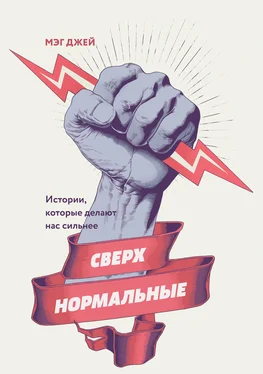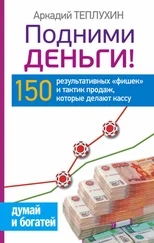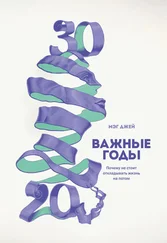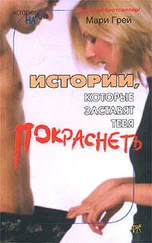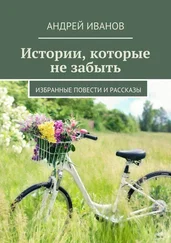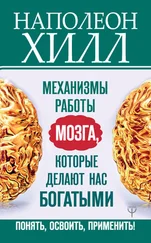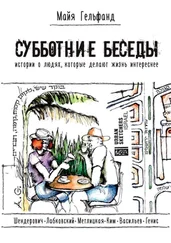Если амигдала, по словам Леду, это «втулка в колесе страха» [139], то часть мозга, называемая полем Брока, – это втулка в колесе речи. То, что мы видим, слышим и чувствуем, она превращает в слова [140], а затем подает моторной области коры головного мозга сигнал их продуцировать. Так вот, как показывают исследования человеческого мозга, у некоторых людей при резком повышении активности в миндалевидном теле снижается активность поля Брока [141]. Иначе говоря, столкнувшись с чем-то страшным, амигдала резко активируется, а поле Брока, наоборот, успокаивается, а сам человек немеет. По всей вероятности, потеря дара речи от ужаса происходит на неврологической почве; и, несомненно, у нас есть все основания говорить об адаптивной ценности того, что в случае опасности человек старается обращать на себя как можно меньше внимания, вместо того чтобы кричать. Ведь в результате такого поведения охотящийся за тобой лев узнает, что ты прячешься в кустах. Очевидно, по этой причине один из мальчиков, который в тот день был в школьном автобусе из Чоучиллы, позже признался, что ему просто «было слишком страшно, чтобы плакать» [142].
Конец ознакомительного фрагмента.
Текст предоставлен ООО «ЛитРес».
Прочитайте эту книгу целиком, на ЛитРес.
Безопасно оплатить книгу можно банковской картой Visa, MasterCard, Maestro, со счета мобильного телефона, с платежного терминала, в салоне МТС или Связной, через PayPal, WebMoney, Яндекс.Деньги, QIWI Кошелек, бонусными картами или другим удобным Вам способом.
Псевдоним Белл Хукс Глория взяла в честь бабушки, но писала его с маленькой буквы. Прим. пер.
Talking Back: Thinking Feminist, Thinking Black (Boston: South End Press, 1999), 9.
Автор цитаты точно неизвестен, обычно эти слова приписывают Майе Энджелоу.
Американская писательница, поэтесса и мотивационный оратор. Прим. ред.
American Psychological Association, «The Road to Resilience», по состоянию на 29 августа, 2016, http://www.apa.org/helpcenter/road-resilience.aspx; см. также Suniya S. Luthar and Dante Cicchetti, «The Construct of Resilience: Implications for Interventions and Social Policies», Development and Psychopathology 12, no. 4 (2000): 857–885; Ann S. Masten, «Resilience in Children Threatened by Extreme Adversity: Frameworks for Research, Practice, and Translational Synergy», Development and Psychopathology 23, no. 2 (2011): 493–506; Ann S. Masten and Jenifer L. Powell, «A Resilience Framework for Research, Policy, and Practice», in Resilience and Vulnerability: Adaptation in the Context of Childhood Adversities, ed. Suniya S. Luthar (New York: Cambridge University Press, 2003), 1–25; Jennifer R. Riley and Ann S. Masten, «Resilience in Context», in Resilience in Children, Families, and Communities: Linking Context to Practice and Policy, eds. Ray D. Peters, Bonnie Leadbeater, and Robert J. McMahon (New York: Springer, 2005), 13–25.
Dante Cicchetti and Jennifer A. Blender, «A Multiple-Levels-of-Analysis Perspective on Resilience», Annals of the New York Academy of Sciences 1094, no. 1 (2006): 248–258.
Margaret O’Dougherty Wright, Ann S. Masten, and Angela J. Narayan, «Resilience Processes in Development: Four Waves of Research on Positive Adaptations in the Context of Adversity», in Handbook of Resilience in Children, eds. Sam Goldstein and Robert B. Brooks (New York: Springer, 2012), 19.
Определения психологической устойчивости взяты из Free Dictionary, по состоянию на 26 февраля 2017 года, http://www.freedictionary.com.
Dante Cicchetti and Jennifer A. Blender, «A Multiple-Levels-of-Analysis Perspective on Resilience», Annals of the New York Academy of Sciences 1094, no. 1 (2006): 248–258; Suniya S. Luthar, Dante Cicchetti, and Bronwyn Becker, «The Construct of Resilience: A Critical Evaluation and Guidelines for Future Work», Child Development 71, no. 3 (2000): 543–562; Suniya S. Luthar, Jeanette A. Sawyer, and Pamela J. Brown, «Conceptual Issues in Studies of Resilience: Past, Present, and Future Research», Annals of the New York Academy of Science 1094 (2006): 105–115.
Victor Goertzel and Mildred George Goertzel, Cradles of Eminence: A Provocative Study of the Childhoods of Over 400 Famous Twentieth-Century Men and Women (New York: Little, Brown, 1962); Victor Goertzel et al., Cradles of Eminence: Childhoods of More than Seven Hundred Famous Men and Women (Scottsdale, AZ: Great Potential Press, 2004).
Victor Goertzel and Mildred George Goertzel, Cradles of Eminence: A Provocative Study of the Childhoods of Over 400 Famous Twentieth-Century Men and Women (New York: Little, Brown, 1962); Victor Goertzel et al., Cradles of Eminence: Childhoods of More than Seven Hundred Famous Men and Women (Scottsdale, AZ: Great Potential Press, 2004).
Victor Goertzel et al., Cradles of Eminence: Childhoods of More than Seven Hundred Famous Men and Women (Scottsdale, AZ: Great Potential Press, 2004), 133.
Letters of Mrs. Adams: The Wife of John Adams (Boston: Wilkins, Carter, 1848), 111.
Josef Breuer and Sigmund Freud, Studies in Hysteria (Boston: Beacon Press, 1950).
Цит. по Anais Nin, In Favor of the Sensitive Man, and Other Essays (San Diego: Harcourt Brace, 1976), 14; эти слова также приписываются Фрейду и даже высечены на стене музея Фрейда в Вене.
Alexander Pope, Moral Essays, epis.i, line 149.
Norman Garmezy, «The Study of Competence in Children at Risk for Severe Psychopathology», in The Child in His Family. Vol. 3, Children at Psychiatric Risk, eds. Elwyn J. Anthony and PG. Koupernik (New York: Wiley, 1974), 77–97; Norman Garmezy, «Stress, Competence, and Development: Continuities in the Study of Schizophrenic Adults, Children Vulnerable to Psychopathology, and the Search for Stress-Resistant Children», American Journal of Orthopsychiatry 57, no. 2(1987): 159–174; Norman Garmezy, «Vulnerability Research and the Issue of Primary Prevention», American Journal of Orthopsychiatry 41, no. 1 (1971): 101–116; Ann S. Mastenand Auke Tellegen, «Resilience in Developmental Psychopathology: Contributions of the Project Competence Longitudinal Study», Development and Psychopathology 24, no. 2(2012): 345–361.
Читать дальше
